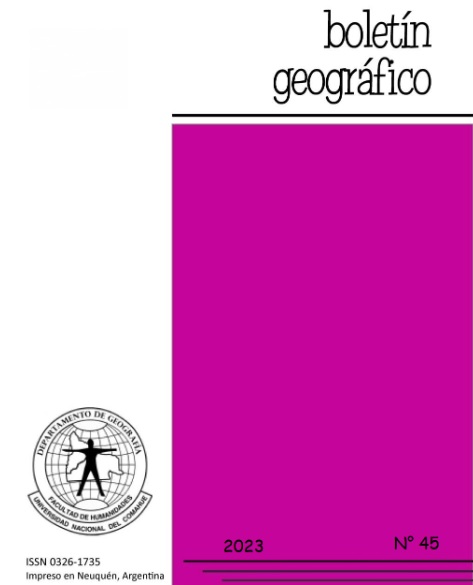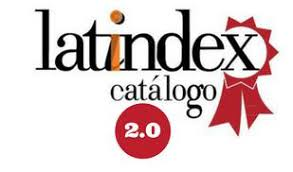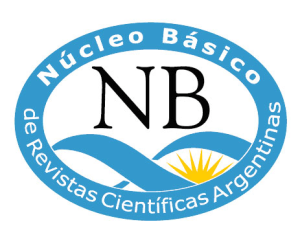Modeling the physiological timing of Ceratitis capitata through remote sensing in strategic territories in Central America
Keywords:
Mediterranean fruit fly, Cumulative thermal units, Phytosanitary risk, Monitoring, Epidemiological surveillanceAbstract
The Mediterranean fly is a quarantine pest that can directly affect the production and marketing of fruits and vegetables worldwide. It is a species with polyphagous behavior and has a high number of susceptible hosts, both wild and economically important. Currently, in Central America and Southern Mexico, there are strategic territories with permanent monitoring of the pest, which act as barriers in its advance towards North America. The use of remote sensors in the phytosanitary area has the potential to contribute to decision-making in the establishment of preventive strategies to mitigate the advance and phytosanitary risk of Ceratitis capitata. It can even be considered a geotechnological tool that contributes to the processes of monitoring and surveillance of health risks, through the analysis of environmental information, particularly the thermal component. Temperature is an essential factor for the immature and adult stages of the Medfly. The objective of this study was to design the physiological time of C. capitata through the calculation of accumulated heat units (UCAcum) in strategic territories. Specifically, the study aimed to model and calculate the physiological time of C. capitata through the accumulated heat units (UCAcum) in the potential containment, containment, and eradication zones using ERA5 data.
A spatiotemporal pattern was obtained for the period from December 2020 to December 2021, showing the monthly thermal behavior that favors C. capitata on two scales: a regional scale that included the countries of El Salvador, Honduras, Guatemala, and southern Mexico, and the previously defined strategic zones.
The study revealed a monthly thermal oscillation from 13,1 to 37,4°C, considering extreme temperatures. The surfaces with optimal thermal accumulation, determining the physiological time of the pest, were identified based on the fact that C. capitata requires 251,7 UCAcum to complete a life cycle. In the potential containment zone, 463,4 UCAcum were determined for portions of Honduras and El Salvador. In the containment zone in Guatemala, 418,8 UCAcum were identified, and finally, in the eradication zone, an accumulation of 401.3 units was observed in Guatemala and the Pacific coast in the Mexican southeast. This spatial analysis showed that the physiological time presented a uniform behavior in strategic territories.
Modeling UCAcum from remote sensing strengthens strategic decision-making regarding health risks. The strength of this approach lies in the accessibility of freely available inputs and recent temporality, allowing the creation of risk scenarios under a preventive approach in almost real-time (with a three-week delay). Thermal comfort modeling should be considered a contributing input to effectively direct preventive strategies by the National and Regional Plant Protection Organizations. These organizations are responsible for implementing mitigation strategies before the arrival of pests or diseases that endanger the global agro alimentary heritage.
Downloads
References
ASGROW. (2018) Manejo de Zonas de Plagas con Imágenes Satelitales. https://www.asgrow.com.mx/es-mx/tendencias/agrotecnologia/manejo-de-zonas-de-plagas-con-imagenes-satelitales.html (Acceso: 21/11/2021).
CCCS-C3S. (2017). Copernicus Climate Change Service (C3S) ERA5: Fifth generation of ECMWF atmospheric reanalyses of the global climate. Copernicus Climate Change Service Climate Data Store (CDS), (date of access), https://cds.climate.copernicus.eu/cdsapp#!/home (Acceso: 27/11/2021).
Duyck, P.F y Quilici, S. (2002) Supervivencia y desarrollo de diferentes etapas de la vida de tres Ceratitis spp. (Diptera: Tephritidae) Criado a cinco temperaturas constantes. Bulletion of Entomological Research, 92, 461-469. https://doi.org/10.1079/ber2002188
Enkerlin, W., Gutiérrez-Ruelas, J.M., Villaseñor Cortes, A., Cotoc Roldan, E., Midgarden, D., Lira, E., Zavala López, J.L., Hendrichs, J., Liedo P. and Trujillo Arriaga, F.J. (2015). Area Freedom in Mexico from Mediterranean Fruit Fly (Diptera: Tephritidae): A Review of Over 30 Years of a Successful Containment Program Using an Integrated Area-Wide SIT Approach. Florida Entomologist, 98(2):665-681. DOI: http://dx.doi.org/10.1653/024.098.0242
Enkerlin, W.J., Gutiérrez Ruelas, J.M., Pantaleón, R., Soto Litera, C., Villaseñor Cortés, A., Zavala Lopez, J.L., Orozco Dávila, D., Montoya Gerardo, P., Silva Villarreal, L., Cotoc Roldán, E., Hernández López, F., Arenas Castillo, A., Castellanos Domínguez, D., Valle Mora, A., Rendón Arana, P., Cáceres Barrios, C., Jardín Medio, D., Villatoro Villatoro, C., Lira Prera, E., Zelaya Estradé, O., Castañeda Aldana, R., López Culajay, J., Ramírez y Ramírez, F., Liedo Fernández, P., Ortíz Moreno, G., Reyes Flores, J., and Hendrichs, J. (2017). The Moscamed Regional Programme: review of a success story of area-wide sterile insect technique application. Special Issue - Sterile Insect Technique. Special Issue - Sterile Insect Technique. https://doi.org/10.1111/eea.12611
Grageda-Grageda1, J., Ruiz-Corral, J.A. Jiménez-Lagunes, A. y Fu-Castillo, A.A. (2014) Influencia del cambio climático en el desarrollo de plagas y enfermedades de cultivos en Sonora. Revista Mexicana de Ciencias Agrícolas, vol.5 no.spe10.
Gutiérrez Samperio, J. 1979. Campaña Nacional Contra la Mosca del Mediterráneo. Folia Entomológica Mexicana 42: 9-11.
Harris, E.J. & Lee, C.Y.L. (1986). Seasonal and annual occurrence of Mediterranean fruit flies (Diptera: Tephritidae) in Makaha and Waianae Valleys, Oahu, Hawaii. Environmental Entomology, 15:507-512. https://doi.org/10.1093/ee/15.3.507
LNMySR-INIFAP. 2022. Laboratorio Nacional de Modelaje y Sensores Remotos, Instituto Nacional de Investigaciones Forestales, Agrícolas y Pecuarias. INIFAP. http://clima.inifap.gob.mx/lnmysr/Principal/unidadesCalor (Acceso: 02/01/2022).
METORED. (2020). La importancia de la fenología https://www.meteored.mx/noticias/ciencia/la-importancia-de-la-fenologia.html#:~:text=En%201918%20Andrew%20Hopkins%20estableci%C3%B3,la%20duraci%C3%B3n%20de%20las%20plantas. (Acceso: 01/11/2021).
Olvera Vargas, L. A., Contreras Medina, D. I., & Aguilar Rivera, N. (2020). Cálculo de grados días de Hypothenemus hampei a través de imágenes satelitales. Revista Mexicana De Ciencias Agrícolas, 11(3), 544-554. https://doi.org/10.29312/remexca.v11i3.2041
Pacheco-Covarrubias, J.J., Soto-Nolasco, J. y Valenzuela-Valenzuela, J.M. (2016). Densidad poblacional de Mosca blanca Bemisia Spp. (Hemiptera: aleyroididae) en el valle de Guaymas-Empalme Sonora, México. Biotecnia, Vol.8 (3). DOI: https://doi.org/10.18633/biotecnia.v18i3.329
PHYTOMA. (2016). Influencia de las altas temperaturas sobre las plagas. https://www.phytoma.com/noticias/noticias-de-actualidad/influencia-de-las-altas-temperaturas-sobre-las-plagas (Acceso: 12/01/2022).
Ramírez-Cabral, N., Medina-García, G. & Kumar, L. (2020). Increase of the number of broods of Fall Armyworm (Spodoptera frugiperda) as an indicator of global warming. Revista Chapingo Serie Zonas Áridas, 19(1), 1-16. doi: 10.5154/r.rchsza.2020.11.01.
Schwarz A.J., Liedo J.P. & Hendrichs J.P. 1989. Current programme in Mexico. In Robinson AS and Hooper G [eds.], Fruit Flies, Their Biology, Natural Enemies and Control. World Crop Pests, vol. 3B Elsevier, Amsterdam, The Netherlands.
Segura, D.F., Vera, M.T. & Cladera, J.L. (2006) Fluctuación estacional en la infestación de diversos hospedadores por la mosca del Mediterráneo, Ceratitis capitata (Diptera: Tephritidae), en la provincia de Buenos Aires. Ecología Austral, 14 (1). http://www.scielo.org.ar/scielo.php?script=sci_arttext&pid=S1667-782X2004000100002&lang=es
SENASICA. (2020). Ficha técnica Mosca del Mediterráneo. https://www.gob.mx/senasica/documentos/mosca-del-mediterraneo-110879 (Acceso: 03/04/2022).
Tepole-García, R.E., Ramírez-Rojas, S., Bartolo-Reyes, J.C. y Castrejón-Gómez, V.R. (2016). Ciclo de vida y análisis de riesgo climático de Leptoglossus zonatus Dallas (Hemiptera: Coreidae) para las zonas productoras de sorgo en el estado de Morelos, México. Acta zoológica mexicana, 32(3), 300-309. http://www.scielo.org.mx/scielo.php?script=sci_arttext&pid=S0065-17372016000300300&lng=es&tlng=es.
Vargas, L. A. (1993). Monitoreo de plagas en el cultivo de brócoli y coliflor. Birds Eye de México S.A. de C.V. Boletín. Informativo, Núm. 1. 11 p.
Published
How to Cite
Issue
Section
ARK
License
Copyright (c) 2023 Boletín GeográficoTransfer of rights and data processing
The acceptance of an article for publication in the Journal Geographic Bulletin implies the cession of the rights of printing and reproduction, by any means and means, of the author in favor of the Department of Geography of the National University of Comahue, which will not reject any request reasonable for the authors to obtain permission to reproduce their contributions. The total or partial reproduction of the works published in the Geographic Bulletin must be done citing the origin, otherwise, the copyright is violated.
Likewise, it is understood that the concepts and opinions expressed in each work are the sole responsibility of the author, without being responsible or in solidarity, necessarily, neither the editorial staff nor the editorial staff.
It is the responsibility of the authors to be able to provide interested readers with copies of the raw data, procedure manuals, scores and, in general, relevant experimental material.
Likewise, the Management of the journal guarantees the appropriate treatment of personal data
COPYRIGHT TRANSFER FORM

















 Journal of the
Journal of the 